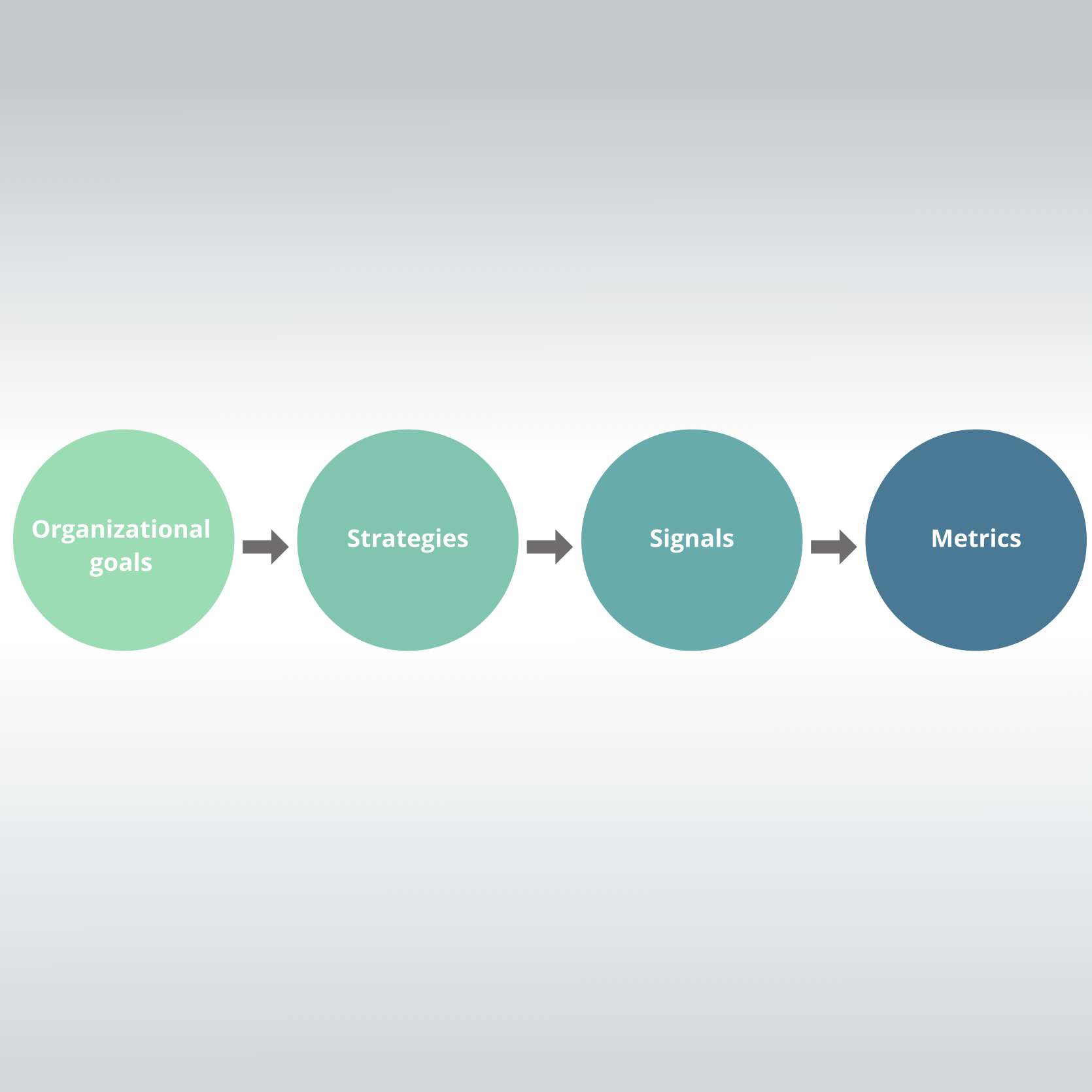It’s critical to align CX and UX initiatives with the company’s overarching strategy and Key Performance Indicators (KPIs). Practitioners do this by aligning corporate goals with CX/UX strategies, signals, and metrics.
A key reason it’s so important to align CX and UX initiatives is that leadership doesn’t always understand the importance of these experiences and are unwilling to spend money and time on them. By tying them to the corporate strategy, it shows that improving the customer and user experience directly impacts the bottom line and contributes to the overall success of the business.
The importance of this alignment cannot be overstated, as it ensures that all members of the organization are working in harmony towards a shared vision.
Here’s how to think about the relationships:

Organizational goals: These are broad, overarching targets or outcomes that the organization wishes to achieve. They define the “what” in terms of desired end results. For example, a company might have a goal to increase market share for a given user segment.
Strategies: These are the approaches or methods used to achieve the set goals. They define the “how” in terms of action. For example, if the goal is to increase market share, a strategy might involve creating a seamless user experience during onboarding.
Signals: Signals are early indicators or warning signs that tell you if you are moving in the right direction towards your goal. In the example, a signal could be feedback during usability testing that users are confused about what to do next, or they are unclear about the value proposition of onboarding.
Metrics: Metrics are quantifiable measures used to track and assess the status of a specific process. They provide concrete data to evaluate performance against the set goals and the effectiveness of the strategies employed. In the example, applicable metrics could be the percentage of users who complete the onboarding process and average time to complete onboarding.
When CX and UX initiatives are aligned with corporate objectives, it becomes easier to justify the required investments. This alignment not only highlights the tangible benefits of enhancing the experience (like market share and increased revenues) but also positions the CX and UX teams as strategic partners in the company’s growth. Furthermore, by clearly demonstrating the ROI of these initiatives, teams can secure the necessary resources and support, ensuring that the user experience remains a central focus in decision-making processes.




